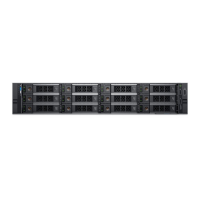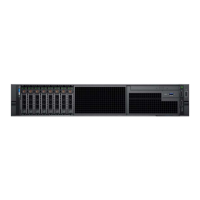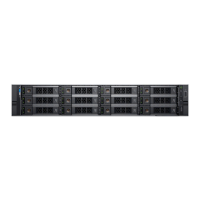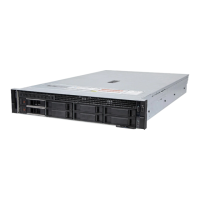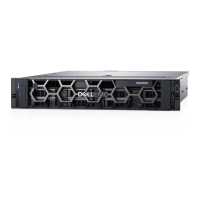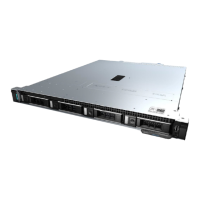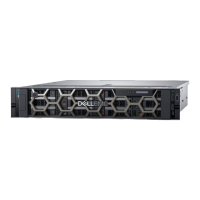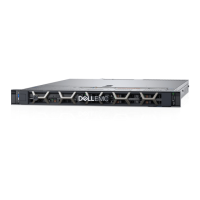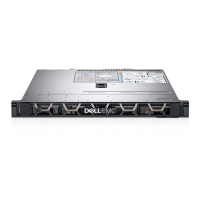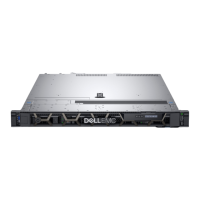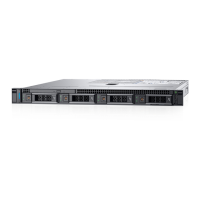Thermal
The system's thermal management delivers high performance through optimized cooling of components at the lowest fan speeds
across a wide range of ambient temperatures from 10°C to 30°C (50°F to 86°F) and to extended ambient temperature ranges.
These optimizations result in lower fan power consumption which translate to lower system power and data center power
consumption.
Thermal design
The thermal design of the system reects the following:
• Optimized thermal design: The system layout is architected for optimum thermal design. System component placement and
layout are designed to provide maximum airow coverage to critical components with minimal expense of fan power.
• Comprehensive thermal management: The thermal control system regulates the system fan speeds based on feedback from
system component temperature sensors, as well as for system inventory and subsystem power draw. Temperature monitoring
includes components such as processors, DIMMs, chipset, system inlet air temperature and hard disk drives.
• Open and closed loop fan speed control: Open loop fan control uses system conguration to determine fan speed based on
system inlet air temperature. Closed loop thermal control uses temperature feedback to dynamically adjust fan speeds based on
system activity and cooling requirements.
• User-congurable settings: With the understanding and realization that every customer has a unique set of circumstances or
expectations from the system, in this generation of servers, we have introduced limited user-congurable settings in the iDRAC9
BIOS setup screen. For more information, see the Dell EMC PowerEdge system Installation and Service Manual on Dell.com/
Support/Manuals and “Advanced Thermal Control: Optimizing across Environments and Power Goals” on Dell.com.
• Cooling redundancy: The system allows N+1 fan redundancy, allowing continuous operation with one fan failure in the system.
Acoustical design
Dell EMC focuses on sound quality in addition to sound power level and sound pressure level. Sound quality describes how disturbing
or pleasing a sound is interpreted, and Dell EMC references a number of psychacoustical metrics and thresholds in delivering to it.
Tone prominence is one such metric. Sound power and sound pressure levels increase with greater populations or higher utilization,
while sound quality remains good even as the frequency content changes. A reference for comparison to sound pressure levels for
familiar noise sources is given in the following table. An extensive description of Dell EMC Enterprise acoustical design and metrics is
available in the Dell Enterprise Acoustics white paper.
Table 7. Acoustical reference points and output comparisons
Value measured at your ears Equivalent familiar noise experience
LpA, dBA, re 20 µPa Loudness, sones
90 80 Loud concert
75 39 Data center, vacuum cleaner, voice must be
elevated to be heard
60 10 Conversation levels
45 4 Whispering, open oce layout, normal living room
35 2 Quiet oce
30 1 Quiet library
20 0 Recording studio
22
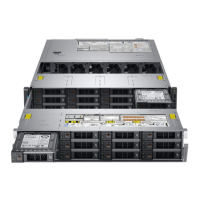
